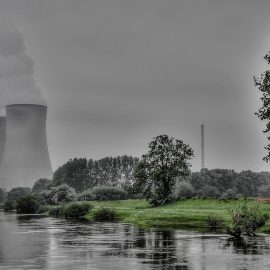

This article is an excerpt from the Shortform book guide to "American Marxism" by Mark R. Levin. Shortform has the world's best summaries and analyses of books you should be reading.
Like this article? Sign up for a free trial here.
Is BLM Marxist? Does the movement encourage revolution? What’s the connection to Critical Race Theory?
Mark Levin claims that social justice movements and organizations such as Black Lives Matter (BLM) are promoting Marxist ideologies that encourage the overthrow of American society. He discusses these movements in his book American Marxism and warns about the dangerous consequences of their agenda.
Continue reading to understand Levin’s argument.
Social Justice Movements Encourage Revolution
Is BLM Marxist? What about CRT? According to Mark Levin, the underlying ideology of these movements is that society is made of oppressors and the oppressed. The oppressors intentionally suppress the lower classes in order to profit and remain on top. As long as these oppressors maintain power, the oppressed will continue to be exploited and mistreated. To halt this endless cycle, the ideology explains, the oppressed must stand up and overthrow their oppressors.
Levin explains that this ideology is inaccurate when applied to American society because America is the global leader in tolerance and equality—the nation has made massive efforts to establish diversity, assimilation, economic redistribution, and equal opportunity for all. Levin adds that these movements actually seek to take away the American values that made these successes possible, like freedom of speech.
| America’s Inequality Gap and Its Connection to Oppression Levin argues that the US is the global leader in tolerance and equality, but research shows that America has a substantially higher inequality gap than almost any other developed nation, and that the gap is widening. Further, some experts attribute a large part of this inequality to America’s history of oppression through slavery and racist policies, evidence that supports the underlying ideology of social justice organizations. In the years since enslaved Black Americans were freed, policies like redlining and hiring discrimination prevented them from climbing the socioeconomic ladder and still hinder Black upward mobility today. So while the wealth of white households has tripled since the 1960s (when Jim Crow laws were abolished), Black wealth has barely increased. But poor whites haven’t fared well either—as of 2021, the bottom 50% of America’s income bracket (composed of all demographics) held only 2.5% of the nation’s total wealth while the top 10% of earners held 70%. |
Black Lives Matter and Critical Race Theory
Levin says that the Black Lives Matter (BLM) movement is a prime example of a dangerous, anti-American social justice movement. He defines BLM as the fusion of Marxism and Critical Race Theory (CRT) and explains that the movement polarizes Americans and incites violent rebellions.
(Shortform note: Black Lives Matter is a social justice movement whose mission statement is to end white supremacy and combat violence against Black people. Levin and many other opponents of the movement claim that BLM is a Marxist organization. And to their point, Patrice Cullors, one of the movement’s three founders, stated that she identifies as a Marxist. However, she claims that despite her personal beliefs, the BLM movement isn’t Marxist and doesn’t push for Marxist ideologies to be adopted by the nation.)
Levin explains that Critical Race Theory is an offshoot of Critical Theory (CT), a Marxist social theory. CT contends that societal beliefs, values, and culture reflect the interests of the most powerful members of society and consequently benefit this group while disadvantaging the lower classes.
CRT builds on CT by putting race at the center of this societal view, claiming that society functions within a racial hierarchy with whites at the top and people of color at the bottom. Consequently, CRT maintains that the American system is riddled with systemic, structural, and institutional racism—and that everyone within American society holds these biases as well. Levin explains that the BLM movement promotes CRT as fact and consequently poses numerous threats to American society.
| Similarities and Differences Among Marxism, Critical Theory, and Critical Race Theory Levin asserts that Critical Theory and Critical Race Theory are both Marxist. He also claims that by endorsing CRT, the Black Lives Matter movement threatens America by encouraging ideas that could lead to a revolution and a communist regime. However, Levin’s assertions that CT and CRT are “Marxist” theories are not entirely accurate. Levin is correct that Critical Theory was developed by social theorists of the Western European Marxist tradition (The Frankfurt School) and that the theory is heavily influenced by Marxism. However, it’s an overstatement to call the theory “Marxist” in the traditional sense, as the theory doesn’t endorse Marx’s call for a communist system. While Critical Theory shares Marx’s general analysis that the functionalities of society benefit the powerful at the disadvantage of the lower classes, CT doesn’t propose communism as a solution to this injustice, as Marxism does. Instead, CT emphasizes the need for open, transparent government systems that incorporate social criticism as an inherent element of the governing process—in other words, a highly democratic system that’s able to change based on society’s present concerns and needs. Critical Race Theory also operates under the Marxist framework that analyzes society as benefiting the powerful dominant group at the expense of disadvantaged groups. But it departs from and adds to Critical Theory by asserting that in America specifically, race is the main factor that classifies dominant and disadvantaged groups. Marx’s framework makes no connection between race and class inequality, which makes CRT fundamentally different from Marxism at its core. And like CT, CRT can’t be reduced to a “Marxist” theory because it doesn’t propose communism as a solution to the injustice it uncovers. |
The Dangerous Consequences of BLM and CRT
Levin argues that BLM and CRT pose many threats to American society, but emphasizes three main threats. First, Black Lives Matter pits Blacks and other minorities against whites and incites deep-seated anger and resentment toward American society that could easily lead to revolution. Levin argues that the violent riots which broke out during BLM protests are evidence of this claim.
| Violence Begets More Violence Levin claims that BLM has caused resentment in Black people that leads to violence. To take this point even further, this violence begets more violence—other groups have started taking up arms and committing violent acts to try and counter the perceived violence of BLM protests. We can see the devastating effects of this counter-violence in the case of Kyle Rittenhouse. During a BLM-affiliated racial justice protest in August 2020, Kyle Rittenhouse and many self-identified “militants” armed themselves to protect private property from protestors. However, this attempt to counter protest violence led to more violence and death. Upon seeing Rittenhouse’s military-style rifle, a protester began chasing Rittenhouse away from the group of protestors. Out of fear, Rittenhouse fatally shot his pursuer. When the shot rang out, more protesters took notice and began to pursue Rittenhouse. Rittenhouse shot two more pursuers, killing one. |
Second, BLM and CRT encourage censorship and speech regulation—anyone who speaks against the BLM movement or contradicts CRT’s ideas is labeled a “racist” and denounced by society. Levin says that this is a step toward the eradication of freedom of speech that could happen if the American Marxists succeed in taking control of the nation.
| Speech Regulation Has Detrimental Effects on Diversity and Understanding Levin explains that BLM and CRT encourage speech regulation that essentially censors opposing ideas. Experts add that this speech regulation is also being encouraged in the workplace and that it has created barriers to cross-cultural communication. With the rise of BLM and CRT, cultural training has been implemented in many workplaces to teach employees how to be more politically correct. This training teaches employees about microaggressions—subtle interactions that communicate bias toward historically marginalized groups. Employees are encouraged to censor their speech to avoid microaggressions in an effort to make workplaces more inclusive and less hostile toward minorities. However, despite the many benefits of this training, experts explain that it’s also resulted in stress and further polarization between majority and minority groups. Many people, minority and majority members alike, fear asking difficult questions due to the worry that they’ll be “canceled” and shunned by their community. Consequently, they end up censoring their speech or avoiding conversations with those of different backgrounds to avoid facing criticism. |
Third, CRT has provided Democrats with an excuse to infringe on citizens’ privacy and provide minority demographics with unfair advantages. He explains that President Biden has created a new agency to gather federal datasets on race, ethnicity, gender, disability, income, and other demographic variables, invading Americans’ privacy by gathering their personal data to “ensure equitable outcomes.” Levin claims that these “equitable outcomes” will give minorities an unfair advantage over majority demographics rather than “equal opportunity and treatment,” which is what he believes is fair.
Ultimately, Levin claims that the effects that Black Lives Matter and other Marxist movements have on American beliefs and policies are pushing American society toward collapse and totalitarianism. He warns that, if we let this continue, we risk losing the rights and freedoms that America was founded on.
| Is Equity Helpful or Unfair? Levin believes that Biden’s equitable outcomes initiative infringes on citizens’ privacy and will provide minorities with unfair advantages, but many people feel otherwise. First, a large portion of people feel that the data being collected by Biden’s Administration doesn’t infringe on their privacy because it’s mostly information they’ve already given out—either through government census data collection or information collected by organizations like their employers and universities. Second, while Levin argues that Biden’s goal of ensuring equity will give minorities an unfair advantage, many believe that equity—as opposed to pure equality—is necessary to establish a truly just and equal society. This is because equality means giving everyone the same resources and opportunities and hoping that this will make them “equal.” On the other hand, equity means providing individuals with resources and opportunities on a need-by-need basis to ensure equal outcomes. For example, giving a rich person and a poor person $100 each would be equal. Giving the rich person $50 and the poor person $150 would be considered equitable because the person who needs more is given more. However, equity is based on fairness, and everyone’s idea of what’s “fair” is different. Some people would say that it doesn’t matter if the poor person needs more money than the rich one—“fairness” would be giving the two people the same amount regardless of their circumstances. |

———End of Preview———
Like what you just read? Read the rest of the world's best book summary and analysis of Mark R. Levin's "American Marxism" at Shortform.
Here's what you'll find in our full American Marxism summary:
- Why Mark Levin thinks leftist organizations are fueling a Marxist revolution
- Who the American Marxists are and what ideologies they’re pushing
- What American patriots can do to maintain their freedom






